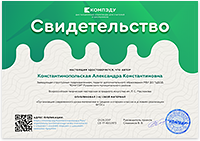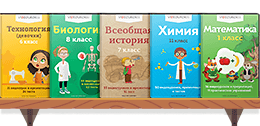Цели урока:
Образовательная цель: способствовать развитию речевой и языковой компетенции на основе формирования представлений о зарубежных поездках и путешествиях школьников, помочь учащимся осознать моральные, социальные и культурные ценности носителей языка.
Развивающая цель: способствовать развитию умения использовать лексико-грамматический материал в новых ситуациях иноязычного общения, развитию внимания и творческого мышления, расширению кругозора за счет знаний лингвострановедческого характера.
Воспитательная цель: способствовать воспитанию толерантности к чужой культуре.
Задачи:
углубление знаний о культуре, истории и традициях страны изучаемого языка, повышение общей культуры учащихся;
развитие умений и навыков подготовленной и неподготовленной речи;
обучение выражению собственного мнения;
развитие умений чтения, аудирования, письма;
развитие интеллектуальных, познавательных и языковых способностей, формирование ценностной ориентации, развитие гуманистического мышления;
воспитание уважения и интереса к культуре, истории, традициям и реалиям современной жизни англоговорящих стран, создание положительной мотивации, стимулирование познавательной активности.
Предполагаемый результат:
Осуществляется закрепление полученных знаний и получение новой информации за счет использования заданий, основанных на различных аспектах иностранного языка (говорение, аудирование, чтение, письмо).
Задания носят творческий характер, требующий от учащихся определенного уровня социолингвистической компетенции (например, выражения собственного мнения на основе полученных представлений о стране изучаемого языка).
Углубление знаний о стране изучаемого языка, повышение общей культуры учащихся.
Повышение познавательной активности.
Оснащение: учебные пособия авторов Н. В. Юхнель, Е. Г. Наумова: English 6, Мн., 2009, карта Великобритании, иллюстрации и фотографии с видами Шотландии и Лохнесского чудовища, презентация « Давайте вспомним о Шотландии», мультимедийный проектор, DVD-фильм о «Лохнесском чудовище».
Ход урока
1. Организационный момент.
T.: Good afternoon, dear friends. I am glad to see you. How are you today? I think everything is OK. Are you ready to start our work
2. Речевая зарядка.
T.: John Clarke said: “He that travels far knows much”. I think these words can be the motto of our lesson. Try to prove that J. Clarke was really right. What do people travel for? Look at the diagram, it can help you to answer this question.

T.: Let’s summarize everything you have said.
3. Постановка темы и цели урока.
T.: Well, but why did I begin our lesson from the quotation? Why did we speak about travelling?
( Maybe we shall travel today? Shall we talk about English-speaking countries?)
T.: Yes, you are quite right. We are going to make a magic trip to one of the English-speaking countries. It’s Scotland. You know that all countries have their national symbols, their emblem, their anthem, their customs and traditions, their history and legends. And today I would like to speak about something unusual.
4. Основной этап.
4.1. Актуализация опорных знаний.
T.By the way, what do you know about Scotland?
T.: Now, let me introduce a presentation “Let’s remember about Scotland”. While watching it and listening to my comments, get ready to answer my questions. Pay attention to details!
T.: And now ,it’s time to answer the following questions.
Where is Scotland?
What is its capital?
What is the national symbol of the country?
Are there any lakes in Scotland? Can you name some of them?
T.: Well done!
T.: Scotland is a very beautiful country. It has a long history. And of course it has a lot of legends and unusual stories.
T.: And now, children, close your eyes. Imagine that you are in Scotland. You are standing near a beautiful lake. It is Loch Ness. Look, there’s an unusual animal in the lake! What is it? It’s coming nearer and nearer. Oh, my God! It’s got a long neck, a small head and a large ugly body. It’s terrible! It’s a monster!
4.2. Практика аудирования (просмотр видеосюжета о Лохнесском чудовище)
T.: Look at these pictures. Do you know what this monster is? Do you believe in Nessie? I have brought you a video about it. Make sure that it exists in reality.
T.: Answer my questions:
Do all people believe in terrible monsters?
Is there a monster in Loch Ness or do people just imagine it?
Do you believe in Nessie?
Is Nessie a terrible monster?
Is Nessie an unusual fish?
To answer these questions will help the following text. Be very attentive!
4.3. Работа с текстом.
Учитель сообщает, что следующий этап работы – чтение:
- We are going to read the text ‘Loch Ness Monster’.
- Please name 3 facts about Loch Ness Monster
- Please name 6 words which, in your opinion, you can find in the text
- Please try to guess the general idea of the text.
1.Read the text quickly to find the description of a monster some people say they have seen.
Loch Ness Monster
In the north of Scotland there is a very famous lake – Lock Ness. It is not the largest lake in Britain, but it is thirty-five kilometers long. The water of the lake is dark and always very cold. And Loch Ness is full of fish.
There cannot be many people who have not heard of the Loch Ness monster. For many years there have been reports of unusual large animals in the lake. There are many stories about the water monster “Nessie”. One of them says, for example, that one Sunday morning a young woman looked out of the dining-room window of the house near the lake and saw in the waters of Loch Ness the “largest animal I have ever seen”. It had, she said later, a giraffe-like neck, a very small head and a great dark grey body.
Is the monster a fact or fiction?
One of the theories about the Loch Ness monster is that these animals in the North Sea, but came to the lake to produce their young in it. After volcanic action in this area, some of them could not come back to the North Sea and stayed in Loch Ness. They continued to live there.
People who say that have seen the monster describe it as an animal with a small head, a long neck and a large body.
Year after year thousands of tourists come to Lock Ness, put their tents and watch the lake in the hope that one of the animals will come up.
A lot is written and said about the monster, and for some people Nessie is good business: shirts with “Nessie” on them, books about the monster, picture postcards and souvenirs are sold to thousands of visitors every year.
The Loch Ness monster is a real attraction for people from all parts of Britain and from many other countries.
Let us hope, however, that scientist will be able to say whether the Loch Ness monster is a fact or fiction.
2. Choose the picture of a dinosaur suitable to this description.
3. Read the first passage quickly, look at the map and find Loch Ness.
Do you see any other lakes in Scotland? Is Loch Ness the largest of them?
4. Read the second passage carefully and put these notes in the right order.
unusual large animals
the house near the lake
the largest animal I have ever seen
who had never heard
in the water of Loch Ness
a very small head
a young woman looked out
there have been reports
5. Read the third passage and find out the information that explains because of what some of monsters could not come back to the North Sea and stayed in Loch Ness.
6. Read the forth passage and mark if these statements are true or false.
Some people think that the Loch Ness monster is an animal with a big head and a short neck.
Thousands of tourists don’t come to Loch Ness to see a monster.
Some people make business using the stories about Nessie.
Visitors can buy many different picture postcards with Nessie.
The Loch Ness monster doesn’t attract people from other countries.
The Loch Ness monster is a fact
4.4. Организация монологических высказываний.
Now work in groups of four, each group having only one of the passages that are in the text. Prepare the retelling of the passage in 3-4 sentences.
Then exchange the partners from the other groups and reconstitute the whole story, from beginning to end.
Well done.
Children, believe it or not is your decision. But there are facts that prove that the Loch Ness monster exists in reality.
You know, we should believe in something incredible, especially at this time of the year when Christmas and New Year are getting close and close.
We should believe in magic and mystery, in unusual things because it makes our life more interesting and mysterious. Even an adult believes in fairy tales and miracles.
5. Подведение итогов. Рефлексия
T.: Do you like our today’s lesson? What was interesting and new for you to know?
P1, P2,…: To my mind, the trip was…/I liked…/As for me…/ It seems to me…
6. Выставление оценок
T.: It’s a pity, but time flies, and our trip is over.
T.: Well, your work was perfect; your marks are…Thank you for being active at the lesson. I’m very pleased with your work. I’ll be glad if you express your opinion about the lesson.
T.: Thanks for your opinions. Now, choose the face which describes your feelings and emotions at the end of the lesson.
7. Домашнее задание
T.: Your task is:
Make up your own unusual story and be ready to tell the story to your classmates.
T.: Thank you for your lesson! Good-bye!





